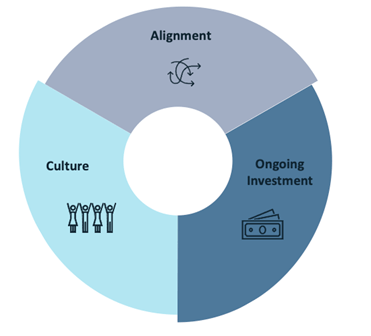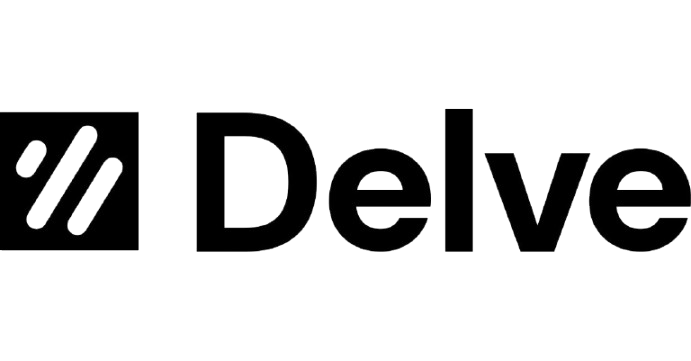
If you are considering leveraging Open Source as part of your product and GTM strategies, there are some key considerations you need to explore. Recently, James Frey, VP of Sales Strategy & Operations at Mirantis (formerly Docker), talked with Ryan Polk, Insight Operating Partner, about his deep experience with Open Source projects and his learnings along the way. Here are some of the key takeaways from their discussion.
Differentiating between Open Source vs. Free Software/Freemium models
Open Source is the general process of contributing source code to a community that anyone can then inspect, modify, enhance, and use under the structure of an Open Source licensing agreement. Open Source models can help accelerate the development of core source code, potentially reducing time to market, and decreasing development costs.
Free or freemium models are different. They can incorporate Open Source, but typically they also include proprietary IP protection as part of the usage agreement. The value proposition is that by providing free commercial source code, you can build brand awareness for your company and entice the customer to participate in organic cross-sell and upsell cycles. Additionally, when they’re set up well, you can experiment and learn with your user base, exploring where true value exists and how you can monetize it.
The key here is that Open Source in and of itself is not a monetization strategy and therefore needs to be part of a toolkit of a well-coordinated GTM strategy designed to drive growth for the organization.
Open Source communities can create leverage and accelerate the development of your product, but not without cost.
Don’t underestimate how much time and investment it can take to stand up Open Source communities and then progress them along month after month, year after year. Here are three key considerations regarding the potential costs of Open Source communities:

- Alignment: The evolution and use of code by a community can rapidly innovate in new and creative ways that your company may not have envisioned. There are pros and cons to this. New innovation can create new opportunities, access to new markets, etc. But, you can lose control over that rapid innovation and the strategic direction of that code, creating misalignment to your GTM strategy. If and when you then try to refocus or redirect the community back in line with your strategy, there can be a backlash and it can create uncertainty around the intellectual property of the Open Source itself.
- Ongoing investment: Communities have to be cared for at a very personal level. It’s about people and relationships and creating energy and excitement to drive contribution and sharing. But people, particularly in large groups, can be very fickle and high maintenance. Maintaining healthy, focused community relationships requires constant attention and focus from the sponsoring organization.
- Culture: Open Source communities can be a powerful extension of your company culture into the market, which is especially valuable if your culture aligns with your target market customers. But, there are situations where communities get out of alignment with your culture. For example, it can be exciting when your community develops a “hacker” mentality. It’s creative and energized, and the “cool kids” start wanting to participate. But that mentality might be out of alignment with your market. If a target customer is a global bank with low-risk tolerance, it may look at your company through the lens of your Open Source community and worry that you aren’t a good partner for them.
Communities and conflicts of interest
From a customer and community perspective, it’s important to consider bifurcating stewardship of the community away from the commercial entity itself. A proof point here is the growth of entities like the Cloud Native Computing Foundation (CNCF). These entities provide companies a very smooth and well-managed mechanism to create Open Source projects and then move them off so that they can effectively remove any conflict of interest that the community base might perceive. This doesn’t mean giving up total control. You can still help manage the community without actual ownership by staying actively involved at the committee level of the Open Source project.
This requires steadfast commitment from both a resource and an investment standpoint to ensure that you continue to drive a noticeable level of contribution to the existing source code.
Monetization patterns – leveraging Open Source to make money
Early examples like Redhat were wildly successful in building a customer base and then monetizing it via Open Source. But now customers are wise to the game – they see that if they invest heavily in Open Source technologies, someday that might turn into a large expense for them.
So how do modern businesses monetize Open Source with today’s savvy customer base? Here are some simple guidelines:
- Do not Open Source anything until you really understand the monetization path as well as your customer base.
- Be crystal clear about the strategic value that your company is creating in the market through your technology.
- Don’t store the Open Source community inside of your commercial entity (see above about conflicts of interest).
- If you are going to monetize Open Source, you have to make sure that your code is enabled with telemetry, so that you know who, when, and how it’s being used.
Said another way, allowing telemetry is the price users pay for “free.”
Beyond monetization: creating leverage
Generally, we want our Open Source investment to generate a 6x to 10x return. But this doesn’t just have to be revenue. It can include intangibles like brand awareness or market expansion. Focusing only on the progression of your product is a one-dimensional view and will often lead to disappointment in your Open Source results. Instead, if you can expand your perspective and understand that your product is part of the progression to and the opening up of a new marketplace or ecosystem, then Open Source can have a massive impact inside of your market.
How you decide to allow access to your Open Source is another aspect of creating leverage. Licensing models have changed dramatically in the Open Source space. As the leader of an Open Source project, your best and worst day will be one and the same: the day companies like Google, Microsoft, and Amazon want to insert themselves into your business plan through your Open Source.
It’s vital that you make the right choices early in your licensing constructs, and that means something like Server Side Public Licensing (SPPL).
In summary, Open Source can create a lot of value and leverage for your business, but not without some costs – both financial and in time and focus. Keep these questions in mind:
- Do you want to pursue Open Source? Or could a Freemium or Free Trial option be more suited to your goals?
- Do you have an understanding of the costs you will be incurring as you pursue your Open Source strategy? Consider financial investment, as well as roles, focus, development, etc.
- How will you protect and amplify your corporate culture while also investing in your Open Source community?
- How will you leverage Open Source to contribute to your company value, whether through revenue or other means?
If you are interested in exploring Open Source as a part of your product and GTM strategy, reach out to the Insight team at Product@insightpartners.com.












